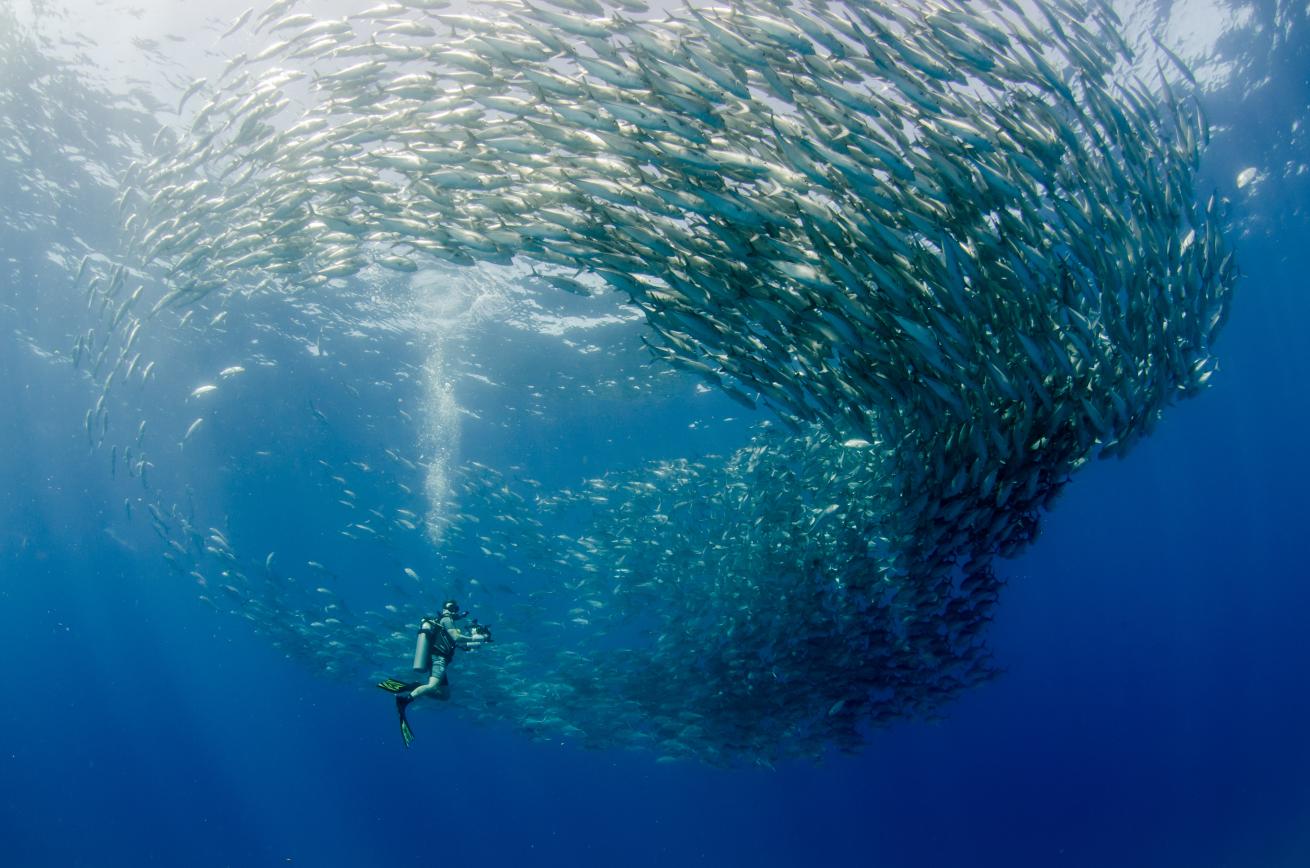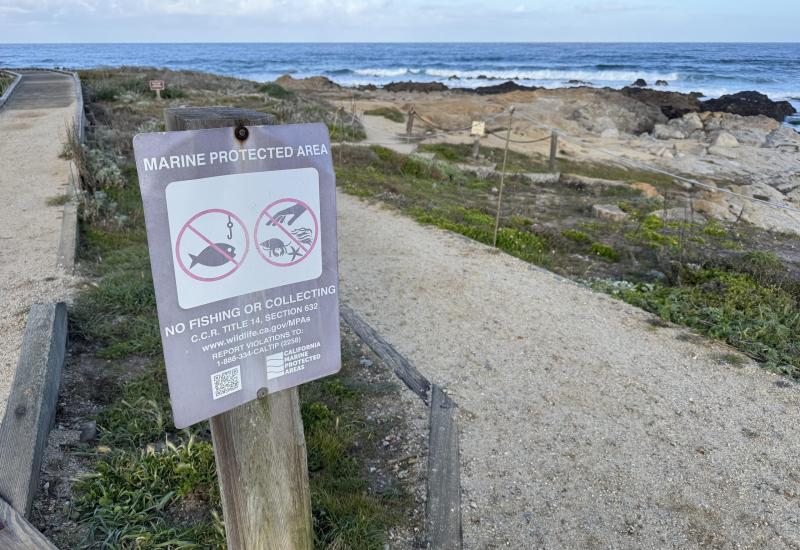Six Awesome Animal Encounters in Mexico’s Baja Sur
The waters around Mexico’s Baja California Sur are alive year-round with pelagic encounters for scuba divers, freedivers and snorkelers to enjoy. Flanked by the bustling Sea of Cortez and Pacific Ocean, the marine life here has impressed divers since the days of Jacques Couteau. With enough dive traffic for multiple scuba hubs in the region from La Paz and Loreto to Cabo Pulmo and Cabo San Lucas. Wherever you choose to stay, buckle up your BC — big encounters are headed your way.
1. Mobula Rays

Shutterstock.com/wildestanimalMantas also known to leap out of the water in mass like flying fish.
Mobula aggregations, known as fevers, come to Baja Sur twice a year. In the winter, the schools are smaller and centered in Cabo, says Jay Clue, owner of Dive Ninja Expeditions, but the water is cleaner and warmer so it’s preferred by photographers. In the spring, fevers that begin to form around Loreto, La Paz, Cabo Pulmo and Cabo San Lucas can swell with thousands of mobulas.
“I’ve seen some that I’m pretty sure are more than 14,000, but I don’t have the data to prove it,” says Clue. “This past season… We had a school that was almost two kilometers long” based on GPS tracking within the boat.
2. Whale Sharks

Shutterstock.com/Leonardo GonzlezDozens of whale sharks can aggregate in La Paz.
The world’s largest fish come to La Paz in droves from November through the end of April to feed on the plankton rich waters of La Paz.
“We sometimes get up to 30 to 40 individuals” La Paz’s protected zone, says James Curtiss, owner of The Cortez Club.
The Mexican government limits the encounter to snorkeling, permits only two snorkelers per boat to enter the water at a time, and does not allow flash photography. Touching whale sharks is forbidden.
These “strict controls and regulations ensure the survival of the species and promote a safe and memorable experience for customers who, in turn, will help spread the word of conservation,” Curtiss says.
2. Dolphins

Shutterstock.com/Andrea IzzottiDolphins leap through the waters of Loreto Bay.
While Mexico’s dolphins are not as playful as their famously joyful Caribbean cousins, they can be found year-round “anywhere in Baja, we get super pods all over the place,” says Clue. “You can go out in Cabo in the morning and you can see them swimming by.”
3. Marlins

Shutterstock.com/Leonardo GonzlezA marlin prepares to charge into a bait ball.
This high-octane snorkel and freediving trip off of Bahia Magdalena in October and November offers travelers the opportunity to zip around the Pacific. In a small fishing boat, snorkelers scan the horizon for birds dashing into the hidden feeding frenzy of marlin zipping through bait balls. While on the water this time of year, visitors are also likely to encounter sea turtles, dolphins and whales.
4. Sea Lions

Shutterstock.com/Wirestock CreatorsA sea lion arcs through the water.
Every diver’s favorite sea pup can be found year-round in Cabo San Lucas or La Paz, where a colony lives at the dive site los Islotes. While they are usually nearshore, they can also be found offshore during the sardine run off Bahia Magdalena, where sea lions tag-team with marlin to herd bait balls.
5. Giant Jack Schools

Leonardo Gonzalez/shutterstock.comJack schools in Cabo Pulmo Marine Park are one of the encounters that draw divers to Baja California Sur.
A single jack can weigh over 50 pounds, and thousands of them collect in Cabo Pulmo National Marine Park to form world-famous aggregations.
“The size of the school and what’s going on changes through the year,” says Clue, but “my favorite time is late August until November because the water is really clear so you can get good photographs.”
6. Oceanic Mantas

Shutterstock.com/Leonardo GonzlezDivers watch an oceanic manta swim through Mexican waters.
Lucky divers can encounter oceanic mantas in the summer, generally July through September at La Paz’s La Reina, north of Cerralvo Island. Dozens of mantas frequented these waters in the late 90s and early 2000s, and in recent years reappeared after more than a decade-long absence, for reasons scientists are still trying to unravel.
Local Dive Shops:










